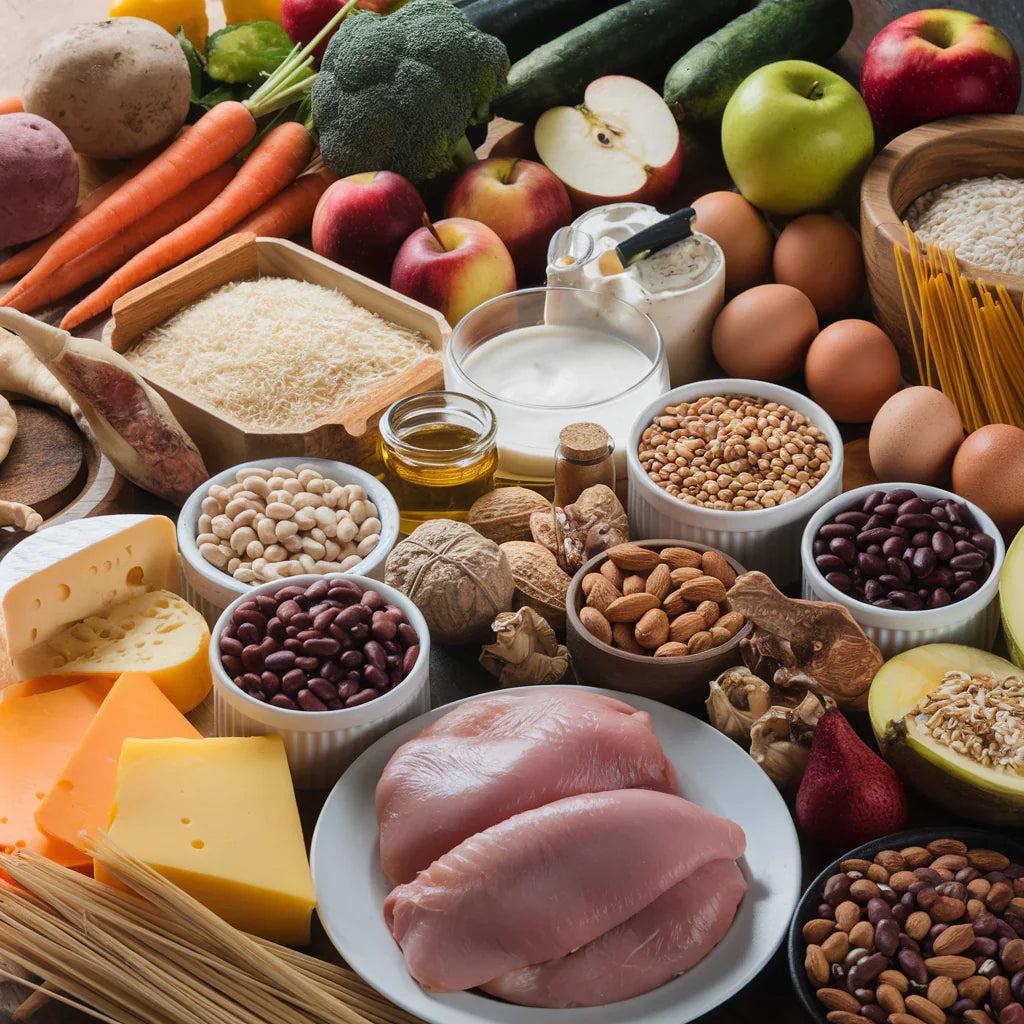Fat and its role in endurance sports
Introduction: Fat as an underestimated energy supplier
Fat plays a central role in endurance sports, especially in long-term exertion such as marathons, triathlons or long bike rides. While carbohydrates are often the focus as the primary source of energy, fat is a decisive factor for endurance performance due to its almost unlimited availability in the body.
1. The importance of fat in endurance sports
Long-term energy source : Fats provide energy slowly but continuously. They are particularly essential for moderate intensity and longer exercise, as the body's glycogen (carbohydrate) stores only last for about 90 minutes.
Protection of glycogen stores : A well-trained fat metabolism protects glycogen stores for intensive stress phases such as final sprints or climbs.
High energy density : With 9 kcal per gram, fat provides more than twice as much energy as carbohydrates or proteins, making it an efficient energy source.
Absorption of fat-soluble vitamins : Fats are necessary for the absorption of vitamins A, D, E and K.
Regeneration and cell building : Omega-3 fatty acids promote regeneration and support the building of cell membranes.
2. Fat metabolism: How the body uses fat
Lipid metabolism is an aerobic process that requires oxygen to convert fatty acids into energy. It consists of three main phases:
A. Lipolysis : release of fatty acids from fat deposits.
B. Beta-oxidation : Conversion of fatty acids into acetyl-CoA in the mitochondria.
C. Respiratory chain : production of ATP (energy) from acetyl-CoA.
Well-trained endurance athletes can use these processes more efficiently and thus metabolize more free fatty acids during exercise.
3. Benefits of a trained fat metabolism
Improved endurance performance : Efficient fat metabolism allows the body to rely on fats as an energy source for longer and conserve carbohydrate stores.
Higher aerobic capacity : Regular exercise improves mitochondrial density and functionality, increasing the ability to burn fat.
Weight management : An active fat metabolism supports the breakdown of body fat and promotes insulin sensitivity.
Everyday effect : An improved fat metabolism also supports the burning of fat in everyday life. This is associated with a higher energy turnover and the basal metabolic rate is increased.
4. Training of fat metabolism
To optimize fat metabolism, the following strategies can be used:
Training at moderate intensity : The so-called FATmax range (50-65% of VO2max) is ideal because this is where the proportion of fat burning is highest.
Long training sessions : Exercises lasting over 90 minutes promote the mobilization and use of fatty acids. Low intensity and long is the magic formula. However, pay attention to the duration of the exercise and increase it slowly.
Fasting training? : Training in the morning without prior carbohydrate intake can teach the body to rely more on fats. But be careful : it is now better to use slowly available carbohydrates and only 30g of carbohydrates per hour. Fasting training should really only be done in exceptional cases and when the exercise duration is less than 40 minutes and below 60% of the individual VO2Max.
Fat adaptation : A high-fat diet over several weeks followed by a carboloading phase can increase fatty acid oxidation during the competition. But be careful with this type of adaptation. It should only be done in consultation with an experienced trainer.
Reduced insulin supply : This means that insulin should be avoided as much as possible during this training. Insulin inhibits fat metabolism.
5. Limits and Challenges
Intensity limited : At high intensities (>70% VO2max), carbohydrate metabolism becomes more dominant because fats can be metabolized more slowly. This is not so easy. Cycling or running slowly is a real challenge for many experienced athletes. This has to be trained.
Nutritional strategies are not universal : Methods such as fasting training or fat adaptation are not suitable for everyone and require adaptation to individual needs and goals.
Training period : An effective fat metabolism only develops after several months of continuous training.
6. Which fats should be consumed in endurance sports?
The quality of fats is crucial to promote athletic performance and support health. Here are the main types of fat and recommendations:
Preferred types of fat
a) Unsaturated fatty acids
Monounsaturated fatty acids:
Sources: olive oil, avocados, nuts (e.g. almonds, hazelnuts).
Benefits: Supports heart health and has anti-inflammatory effects.
Polyunsaturated fatty acids:
Omega-3 fatty acids:
Sources: Fatty fish (salmon, mackerel, herring), linseed oil, walnut oil, chia seeds.
Benefits: Reduce inflammation, promote regeneration and support the cardiovascular system.
Omega-6 fatty acids:
Sources: sunflower oil, corn oil, soybean oil.
Note: Omega-6 fatty acids should be consumed in a balanced ratio to omega-3 fatty acids (ideally 3:1), as an excess can have an inflammatory effect.
b) Saturated fatty acids
Consume in moderation:
Sources: Lean meat (poultry, fillet pieces), dairy products with reduced fat content.
Note: Saturated fatty acids provide energy, but should not make up the majority of fat intake.
c) Avoid trans fats
Sources: convenience foods, fried foods, fast food.
Disadvantages: Increase the risk of inflammation and cardiovascular disease.
7. Recommendations for fat intake
Percentage of the diet:
20–30% of your daily calorie intake should come from fats.
If energy requirements increase (e.g. due to intensive training), the proportion can be increased slightly.
Ratio of fat types:
Focus on unsaturated fatty acids (especially Omega-3).
Limit saturated fats and avoid trans fats.
8. Practical tips for athletes
Use high-quality oils : Cold-pressed vegetable oils such as olive oil, linseed oil or walnut oil are ideal for salads or cold dishes.
Include fatty fish : Two portions of fatty fish per week provide valuable omega-3 fatty acids.
Snack healthily : Nuts and seeds are great snacks on the go and are rich in healthy fats.
Maintain balance : combine fats with carbohydrates and proteins for optimal energy supply.
9. Conclusion
Fat is an essential source of energy in endurance sports, especially during long-term exertion. A well-trained fat metabolism improves endurance performance, protects glycogen stores and supports weight management. Through targeted training methods such as moderate endurance training or insulin-reduced training, athletes can increase their ability to burn fat and thus maximize their performance potential over medium and long distances.
However, the right balance between carbohydrates and fats remains crucial - especially during intensive exercise. Individually tailored training and an adapted diet are therefore the key to long-term success in endurance sports.
In endurance sports, unsaturated fatty acids should be preferred, especially omega-3 fatty acids from fish or plant sources such as linseed oil or walnuts. They promote regeneration, reduce inflammation and provide long-lasting energy. Saturated fatty acids can be consumed in moderation, while trans fats should be avoided completely. A balanced fat intake is essential for health and performance in endurance sports.
---
Sources:
Fat metabolism training - German Journal of Sports Medicine ( Link )
Covert Bailey: Fit or Fat? A new way to health and fitness through nutrition and aerobic exercise.















Leave a comment
All comments are moderated before being published.
This site is protected by hCaptcha and the hCaptcha Privacy Policy and Terms of Service apply.